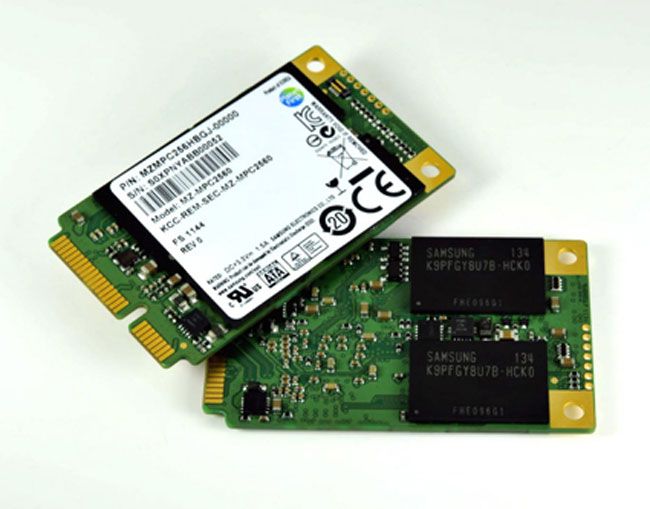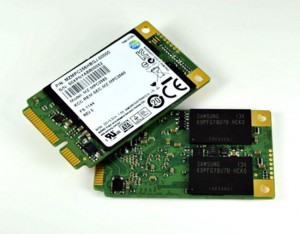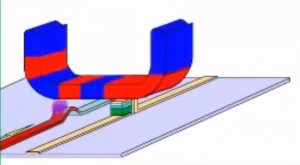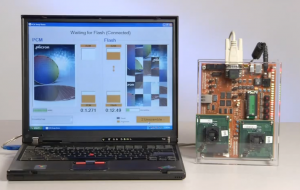Samsung heads into CES 2026 with momentum Samsung Electronics is closing out 2025 with a strong signal of where its future tech ambitions lie….
Clock ticking: cheap 50x faster memory

Every year or two there’s an announcement from researchers of some MASSIVE REVOLUTION in storage. So here we go with a new crop – this time there’s three. Glass, class and sparse. And all promise to be out in the market in a year or two.
 The first is the least interesting: an ultra-sparse interface for flash memory-based hard drives – an ultra-skinny standard, removable Serial-ATA hard drive unit measuring only 51x30x4mm and eight grammes, and can be bought in up 512GB capacities. This is aimed at ultraskinnying the PC ultrabook market even more to keep up with Apple’s Macbook Air, which saves space by it’s drives not being removable (although it can be done).
The first is the least interesting: an ultra-sparse interface for flash memory-based hard drives – an ultra-skinny standard, removable Serial-ATA hard drive unit measuring only 51x30x4mm and eight grammes, and can be bought in up 512GB capacities. This is aimed at ultraskinnying the PC ultrabook market even more to keep up with Apple’s Macbook Air, which saves space by it’s drives not being removable (although it can be done).
Now onto the sexier stuff. The Class is Racetrack Memory from IBM. This is a newer horse in the faster memory race against
 phase change memory (more on this below) and more conventional NAND memory. It tries to get the low cost, high capacities of platter-based magnetic drives and higher cost, high speed and highly kickaboutable flash memory. It’s called Racetrack because it works by sending magnetic ‘stripes’ racing down nanowires, then reads them with a head similar to a traditional hard drive – although instead of reading magnetic polarity of microscopic areas of the platter, it reads the edges of the stripes, allowing higher density of bits and faster, more accurate reads.
phase change memory (more on this below) and more conventional NAND memory. It tries to get the low cost, high capacities of platter-based magnetic drives and higher cost, high speed and highly kickaboutable flash memory. It’s called Racetrack because it works by sending magnetic ‘stripes’ racing down nanowires, then reads them with a head similar to a traditional hard drive – although instead of reading magnetic polarity of microscopic areas of the platter, it reads the edges of the stripes, allowing higher density of bits and faster, more accurate reads.
This tech was first shown in 2008 – The Register has a good summary here. It’s still a long way to commercial applications, as while they’ve got one nanowire  working perfectly, the challenge is to have thousands or millions of nanowires.Researchers are pretty optimistic, though.
working perfectly, the challenge is to have thousands or millions of nanowires.Researchers are pretty optimistic, though.
The biggest news is the glass, Microns’ demonstration of commercially viable phase-change memory (PCM) which is posited as the next generation to take over from current silicon-based NAND and NOR memory technology, which is starting to hit fabrication and physical limitations on increasing speed. PCM uses a glass-like substance, where an electric current causes microscopic areas to change phase.
 A huge advantage of phase change memory is that it can address single bits directly, whereas NAND technology needs to do block reads and writes, slowing things down. In the demo application an image is scrambled and unscrambled, and the PCM memory appears to do it around fifty times as fast.
A huge advantage of phase change memory is that it can address single bits directly, whereas NAND technology needs to do block reads and writes, slowing things down. In the demo application an image is scrambled and unscrambled, and the PCM memory appears to do it around fifty times as fast.
HP is reportedly only a year and a bit away from shipping its own version of phase-change memory called Memristor, which uses titanium dioxide rather than Microns’ silicon dioxide (also known as glass).
So. Around two years away from memory that’s much cheaper and blindingly faster than today’s. Start downloading everything in HD, lads, soon you’re going to have all the space in the world.

